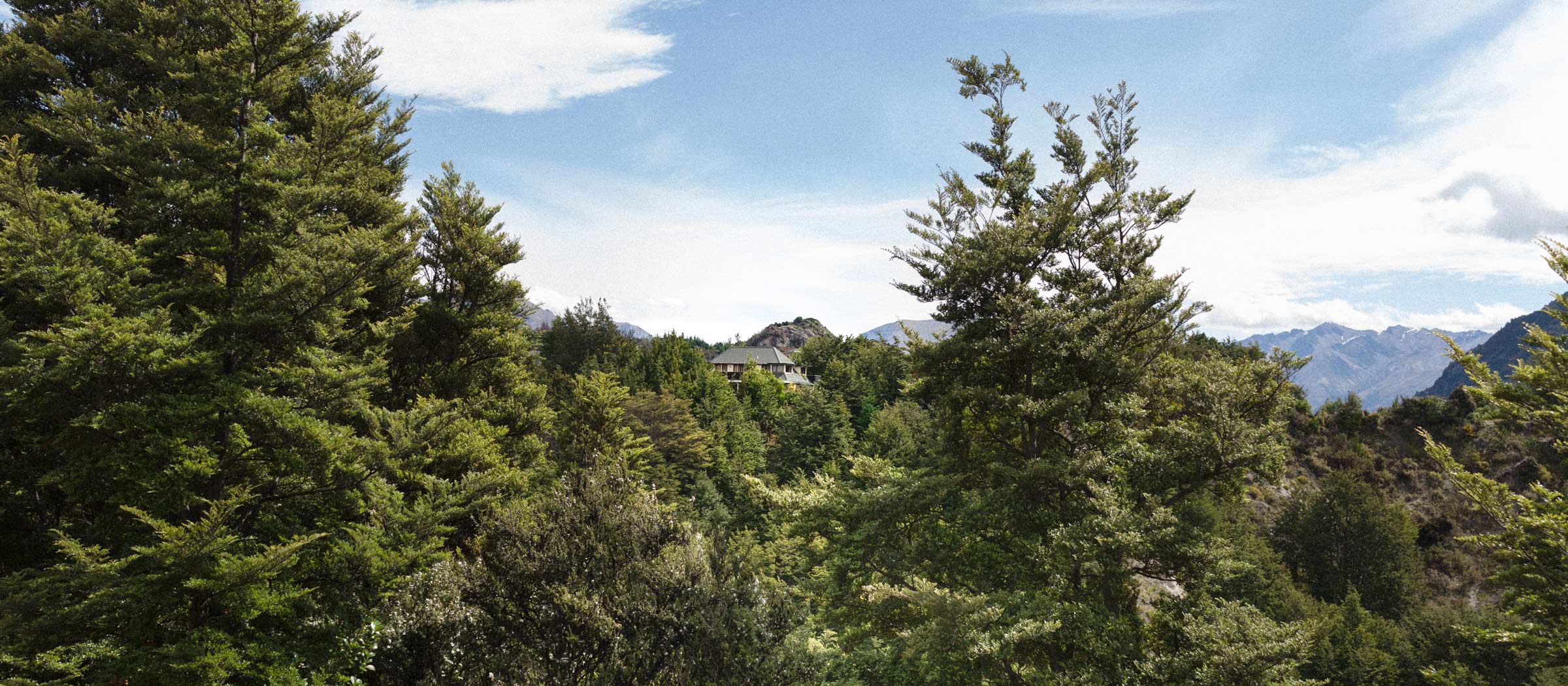Helene Schmitz and the Sublime Power of Nature

- Words by
- Lucy Munro
Early in the 19th Century, the great Romantic poet, Percy Bysshe Shelley, wrote an ode to the tallest mountain in Europe, illustrating the sublime power of untameable wilderness upon the human imagination. In his writings, Shelley sought to contradict the notion that nature was always gentle and idyllic, expressing instead its fierce wildness, “Bursting through these dark mountains like the flame, Of lightning through the tempest”. His words conveyed the human emotions of fear and admiration elicited by the landscape and the concept of nature as a formidable force; as destructive as it is wholesome, as terrifying as it is wonderful.
In many ways, the work of Swedish photographer, Helene Schmitz is an extension of these Romantic notions of the natural world. Represented in an incredible body of work that spans decades, Helene documents the complex and often violent relationships between humans and the landscape. “I am interested in the forces of nature,” says Helene, “How these, in a threatening and terrifying way, can take over and destroy the fragile social edifices we have built in our vain need to control and dominate.”


The Kudzu Project, documented by Helene during a field trip to the Deep South of America, is an example of the powerlessness of humans in the face of the natural world. Captured in a series of sinister, apocalyptic, black and white frames are the monstrous forms of one of the world’s most aggressive and invasive plants, kudzu (Pueraria lobate). First introduced in the USA in 1876 in connection with the country’s centennial celebrations, kudzu was gifted from the Japanese as an admirable ornamental plant with an amazing capacity for growth, shade and foliage. The popularity of the specimen grew quickly, with mass plantings taking place in gardens and alongside roads and railway tracks for erosion control.
Silently and swiftly, the beast of the Kudzu unveiled itself, spreading its roots deep into the earth and its skeins of vines across the landscape at an unfathomable pace. Growing at a rate of a foot a day, the dense cover of the plant had swamped all in its path seemingly overnight, sparking childhood stories of towns disappearing at a mile-a-minute and superstitious behaviours to prevent the plant from invading the house.
Green, mindless, unkillable ghosts.
In Georgia, the legend says,
That you must close your windows,
At night to keep it out of the house.
The glass is tinged with green, even so…
– Kudzu by James Dickey, 1963.
“I find the notion of a plant being invasive intriguing,” says Helene. “It’s a term normally used to describe actions of war. Using such terminology to describe the relationship of mankind with a singular plant and its germination must describe something about our relationship to nature itself.”
In a battle raging against all in its path, the Kudzu is indestructible and unconquerable, transforming the American landscape into something that is unrecognisable and other-worldly. The images are imbued with a sense of admiration and fear – the eye can almost decipher the skeleton of a tree or building beneath the dense plant, but not quite. In the face of such a commanding expression of nature, the confrontation with our powerlessness as humans is discomforting.




Helene further explores her fascination with the sublime power of nature and its dominance over mankind in the Sunken Gardens Project, a series of images that document the ferocious tropical jungle of Suriname, a former Dutch Colony on the coast of South America. The images capture the futile attempts of a butterfly farmer as he increasingly loses control of the wilderness he once believed to have tamed.
Swathing greenery and rambling vines grow rampant throughout the manmade structures they are thinly restrained by, trees burst from the floor of the earth, bulging against the fabric skin of the canopy.”
In some of the images we look from the outside in, amazed by this specimen of primeval botanical life, far beyond the realms of control and order. But in other frames, we are trapped within the threatening space ourselves, fearful of impending doom and suffocation as the available space for human intervention in this wildness becomes less and less.
“The enclosures may be interpreted as a garden of sorts. We often regard gardens as a part of our culture, wherein nature is disciplined, trimmed, and formed,” says Helene.
A garden is an aesthetic human construct of nature, a rationale of the wild, a taming of intractable forces into a space for recreation and pleasure,” she says.
“In my photography, the very opposite takes place. The enclosed gardens bear witness to an impossible colonization project where he who attempts to discipline and exploit the jungle instead finds himself trapped behind vegetation that grows increasingly terrifying. What is the outside, what is the inside? Is the door leading to an enclosure or out of it?”
The complex relationship between humanity and the natural world is evident throughout the body of work of Helene Schmitz. Like Shelley and the Romantics before her, she ponders our human fascination with the terrifying beauty of untameable wilderness; our delight and horror in the face of the sublime natural world.
–
To see more of Helene’s photography visit her WEBSITE and INSTAGRAM.












